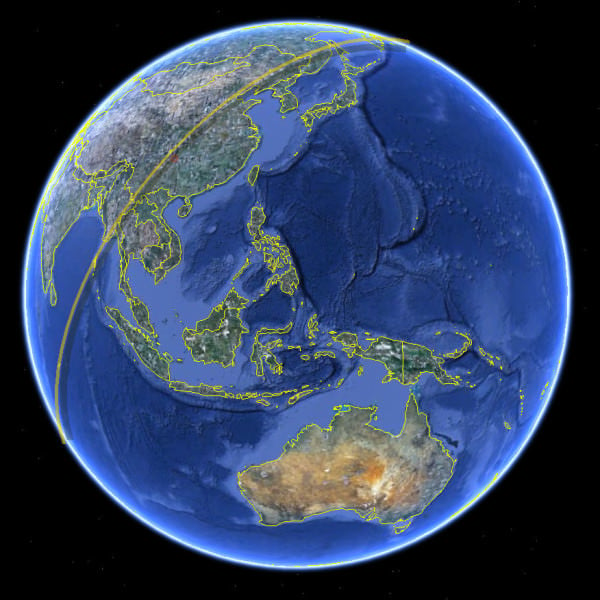[/caption]
It's official: the ROSAT satellite has come down. The Deutsches Zentrum für Luft- und Raumfahrt (DLR), the German Space Agency
confirmed
the satellite plunged to Earth sometime between 1:45 UTC and 2:15 UTC on Oct. 23, 2011 (between 8:45 and 9:15 EDT Oct. 22) There is currently no confirmation if pieces of debris have reached Earth's surface.
Update:
US Strategic Command estimates an entry time of 1:50 UTC +/- 7 Minutes. This entry time would put the satellite in the Indian Ocean, and not over China as reported below. The DLR said that after further analysis they should be able to provide more information about exactly where the debris hit.
The @ROSAT_Reentry Twitter feed posted the picture above, indicating the satellite's fall occurred sometime during the groundtrack shown.
Other reports via Twitter from skywatchers around the world had no sightings of any lit debris falling, or any actual sightings of the satellite passing overhead since 23:30 UTC on Oct. 22. Some news reports say it could have re-entered over China, but it likely didn't make it as far as Korea or Japan.
We'll provide more information when it becomes available.
[caption id="attachment_90039" align="aligncenter" width="580" caption="ROSAT Satellite. Credit: DLR"]
[/caption]
 Universe Today
Universe Today
